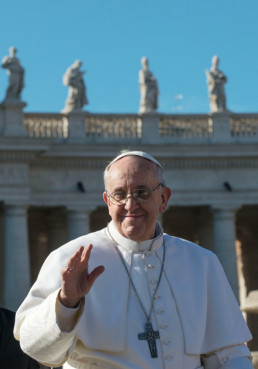I ran across an article about the "first" Memorial Day celebration in America, although I doubt there was a first. The idea of decorating soldiers' graves is very old. Also, the likelihood that only one person in the entire post-Civil War US thought about commemorating the dead seems to make our nineteenth century forebears seem a bit heartless. Add to that our obsession for defining firsts, and we cross the border into silly land.
But this commemoration was different. Recently-freed slaves led the movement to rebury and honor the Union dead from a former prisoner of war camp near Charleston, South Carolina. The day is brought to life in an essay by Yale historian David Blight about the birth of Memorial Day at the end of the Civil War.
The first Memorial Day celebration took place in Charleston, South Carolina in 1865. The city that started the Civil War with the firing on Fort Sumter lay in ruins at the end of the conflict. In the last year of the war, Confederate soldiers had turned the city's race track into a makeshift prison for Union soldiers. Where previously rich white planters had gathered in a conspicuous display of the wealth extracted from the labor of exploited slaves, there stood another symbol of the Confederacy. In the year of its operation, more than 250 northern soldiers died of illnesses related to exposure, malnutrition, and starvation. The Southern surrender at Appomattox in early April of 1865 left the Washington Race Course and Jockey Club empty except for a hastily constructed mass-grave dug by retreating Confederates.
Union Cemetery at Washington Race Course
After news of the surrender spread, some 28 black workmen, mostly former slaves living in Charleston, took it upon themselves to re-bury the Union dead. They built a proper cemetery. Lined it with a whitewashed picket fence. And on the archway over the entrance wrote the words "Martyrs of the Race Course." Then on May 1, 1865, black Charlestonians, along with white missionaries, soldiers, and aid workers held a memorial celebration on the grounds of the slaveholders' former race course.
Over 10,000 people marched that day. The parade was led by 3,000 black schoolchildren: boys and girls who had previously been kept by law from learning to read and write were the corporeal embodiment of the promise of a new south. They were followed by women bearing flowers, wreaths, and crosses to honor the dead. Black men, civilians marching en masse and in orderly martial cadence were next. Finally, federal troops, both black and white -- soldiers in the great war to end slavery -- marched onto the field. All of them understood the powerful symbolism of a celebration by former slaves to honor soldiers of the war to end bondage, held at a the very site of slave aristocracy's power, a southern pleasure ground-turned Confederate prison. To the participants that day, according to Blight, the ceremony was an the Independence Day celebration for the Second American Revolution.In an ideal world, war would not exist. Nations could negotiate terms of co-existence. Religions would not see each other as deadly, satanic enemies, ripe for extermination. Races and states would not be captivated by myths of their personal superiority. The human mind would be impervious to paranoia and superstition.
But in the less-than-perfect world in which we live, war is inevitable. Belligerence and aggression remain prized virtues. Xenophobic fear is coded into our DNA. Kings thirst for land; bishops for souls; merchants for gold; soldiers for glory. The clan, race or country that does not accept this is soon swept from existence, leaving the world to the restless, ruthless and greedy.
But once in a while, a war is not fought for simple domination over others or appropriation of their lands and goods. Such wars are no less vicious or cruel, but they can bring forth a deeper peace, greater stability, a more perfect union.
Warriors do not choose their wars. They deserve honor and remembrance for having placed themselves in harm's way; for accepting the possibility that death and injury are the fruits of their dedication. Yet nations and peoples have a sacred duty to ensure that wars, when they do erupt, are fought for worthy reasons, so that the sacrifice of the men and women who answer the call to duty are not tarnished by unworthy aims. War whose aim is booty, or territory, or destruction of the unbeliever, or elevation of the self are unworthy of celebration. War that results in people unchained, madness ended and peace extended for all may almost be worth the horror, anguish and loss of life.


















